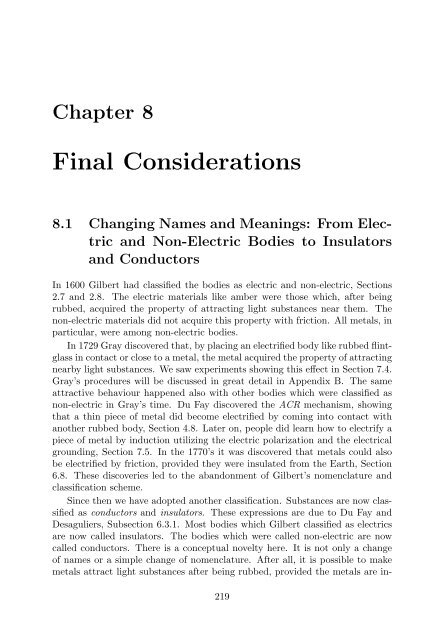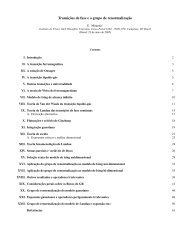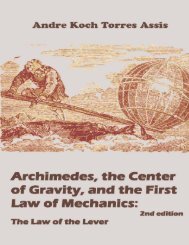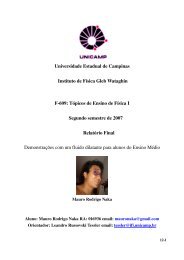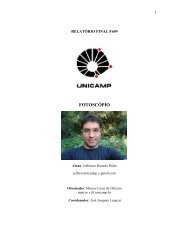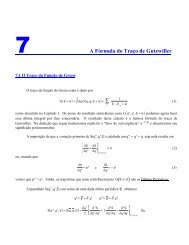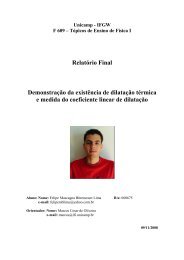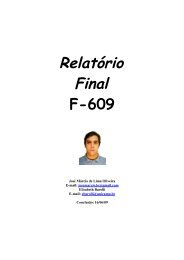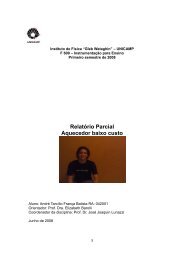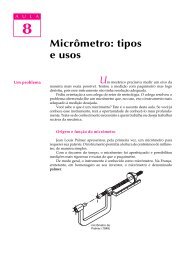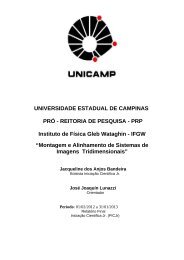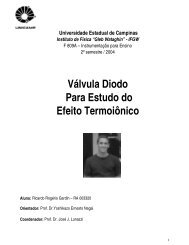The Experimental and Historical Foundations of Electricity - Unicamp
The Experimental and Historical Foundations of Electricity - Unicamp
The Experimental and Historical Foundations of Electricity - Unicamp
You also want an ePaper? Increase the reach of your titles
YUMPU automatically turns print PDFs into web optimized ePapers that Google loves.
Chapter 8<br />
Final Considerations<br />
8.1 Changing Names <strong>and</strong> Meanings: From Electric<br />
<strong>and</strong> Non-Electric Bodies to Insulators<br />
<strong>and</strong> Conductors<br />
In 1600 Gilbert had classified the bodies as electric <strong>and</strong> non-electric, Sections<br />
2.7 <strong>and</strong> 2.8. <strong>The</strong> electric materials like amber were those which, after being<br />
rubbed, acquired the property <strong>of</strong> attracting light substances near them. <strong>The</strong><br />
non-electric materials did not acquire this property with friction. All metals, in<br />
particular, were among non-electric bodies.<br />
In1729 Graydiscovered that, byplacinganelectrified bodylike rubbedflintglass<br />
in contact or close to a metal, the metal acquired the property <strong>of</strong> attracting<br />
nearby light substances. We saw experiments showing this effect in Section 7.4.<br />
Gray’s procedures will be discussed in great detail in Appendix B. <strong>The</strong> same<br />
attractive behaviour happened also with other bodies which were classified as<br />
non-electric in Gray’s time. Du Fay discovered the ACR mechanism, showing<br />
that a thin piece <strong>of</strong> metal did become electrified by coming into contact with<br />
another rubbed body, Section 4.8. Later on, people did learn how to electrify a<br />
piece <strong>of</strong> metal by induction utilizing the electric polarization <strong>and</strong> the electrical<br />
grounding, Section 7.5. In the 1770’s it was discovered that metals could also<br />
be electrified by friction, provided they were insulated from the Earth, Section<br />
6.8. <strong>The</strong>se discoveries led to the ab<strong>and</strong>onment <strong>of</strong> Gilbert’s nomenclature <strong>and</strong><br />
classification scheme.<br />
Since then we have adopted another classification. Substances are now classified<br />
as conductors <strong>and</strong> insulators. <strong>The</strong>se expressions are due to Du Fay <strong>and</strong><br />
Desaguliers, Subsection 6.3.1. Most bodies which Gilbert classified as electrics<br />
are now called insulators. <strong>The</strong> bodies which were called non-electric are now<br />
called conductors. <strong>The</strong>re is a conceptual novelty here. It is not only a change<br />
<strong>of</strong> names or a simple change <strong>of</strong> nomenclature. After all, it is possible to make<br />
metals attract light substances after being rubbed, provided the metals are in-<br />
219


